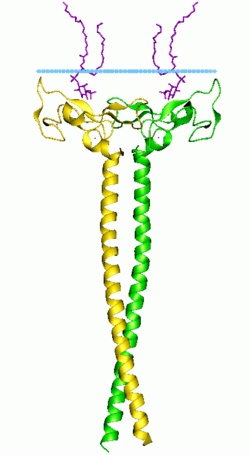Function
EEA1 is a RAB5A effector protein which binds via an N-terminal zinc finger domain and is required for fusion of early and late endosomes and for sorting at the early endosome level. [5] [6]
EEA1 plays a role in endocytosis and is recruited by Rab5-GTP to endosomal membranes. [7] EEA1 may be regulated through monoubiquination, affecting endosome fusion and trafficking. [8] Ubiquitin selective segregase p97 may regulate EEA1's tethering ability, affecting its endosome trafficking and morphology.
This page is based on this
Wikipedia article Text is available under the
CC BY-SA 4.0 license; additional terms may apply.
Images, videos and audio are available under their respective licenses.




